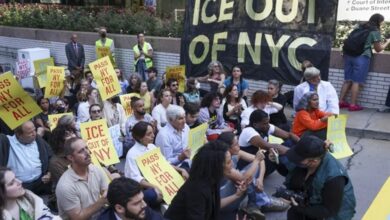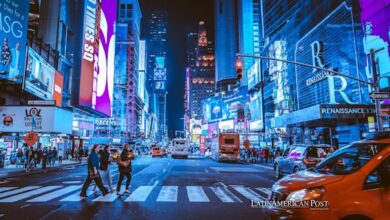What is COVID-19’s impact on Black and Latino persons living with HIV?
NYU research team explores how individuals adapt and cope.

Study explores the effects of COVID-19 on engagement in HIV care of 100 low-income Black and Latino individuals who have lived with HIV for 17 years on average. Photo: Freepik
EurekaAlert | NEW YORK UNIVERSITY
Listen to this article
Leer en español: ¿Cuál es el impacto de COVID-19 en las personas negras y latinas que viven con el VIH?
With the COVID-19 pandemic taking a disproportionate toll on low-income people of color, a research team headed by Marya Gwadz of the Silver School of Social Work at New York University set out to understand the ways the pandemic may put individuals at risk for adverse outcomes, and the ways they successfully adapted to and coped with the emerging pandemic, focused on those from low-socioeconomic status backgrounds who have lived with HIV for a decade or longer.
The team's newly published study explores the effects of COVID-19 on engagement in HIV care, HIV medication use and overall wellbeing during the early stages of the pandemic through a structured assessment of 100 low-income Black and Latino individuals who have lived with HIV for 17 years on average. In-depth interviews were conducted with 26 of these long-term HIV survivors.
The lead author, Marya Gwadz, is professor and associate dean for research at the Silver School of Social Work and head of the Intervention Innovations Team Lab (ITT-Lab), which carried out this research. She is also an associate director in the Transdisciplinary Research Methods Core in the Center for Drug Use and HIV Research (CDUHR) at the NYU School of Global Public Health.
Also read: Study identifies 'post-traumatic growth' emerging from COVID-19 lockdowns
The study was published online by Springer Nature.
"We were interested in risks but also in identifying 'indigenous coping strategies' and gaps that could be addressed for better future preparedness in times of crisis," Gwadz explained. "We define these as effective ways of managing health and wellbeing in the time of COVID-19 that emerge from the community, but are not necessarily strategies that researchers or experts would have come up with."
Among the findings:
- Participants were early adopters of COVID-related public health recommendations such as social distancing, and also sophisticated in their approach to gathering and interpreting public health information from various sources. Trust in local sources of information was higher than trust in various federal sources.
- Their experiences with and knowledge gleaned from the HIV pandemic and living in poverty were often applied to managing COVID-19. For example, participants knew how to "hustle" for food and other resources, and they frequently shared these resources with others in their community. However, the need to hustle, rather than being able to remain at home, placed them at heightened risk of exposure to COVID-19.
- HIV care visits were commonly canceled as a result of the risk factors occasioned by the COVID-19 pandemic, such as inadequate access to some forms of telehealth, and food insecurity — "but, overall, engagement in HIV care and antiretroviral therapy use were not seriously disrupted." Similarly, substance use treatment appointments and supports including 12-step meetings were initially cancelled and eventually switched to a virtual platform, although not all participants could access these services.
- Most had cell phone or internet service (but not both) through the "Obama Phone" program (that is, the Federal Lifeline Assistance program), and generally did not have the equipment, access or technical skills to attend telehealth appointments. Enhancing the Federal Lifeline Assistance program and providing technical training and support are needed to prevent this same problem from arising in future crises.
- The early stages of the COVID-19 pandemic coincided with the re-emergence of the racial justice movement. Participants drew a direct line between structural racism and the disproportional adverse effects of COVID-19 on communities of color, to similar racial/ethnic disparities in HIV prevalence and morbidity and mortality associated with the HIV pandemic.
The study also examines implications for future crisis preparedness, including how the National AIDS/AIDS Strategy can serve as a model to prevent COVID-19 from becoming "another pandemic of the poor."
###
To speak with Marya Gwadz, please contact the NYU press officer listed with this release.
Disclaimer: AAAS and EurekAlert! are not responsible for the accuracy of news releases posted to EurekAlert! by contributing institutions or for the use of any information through the EurekAlert system.




